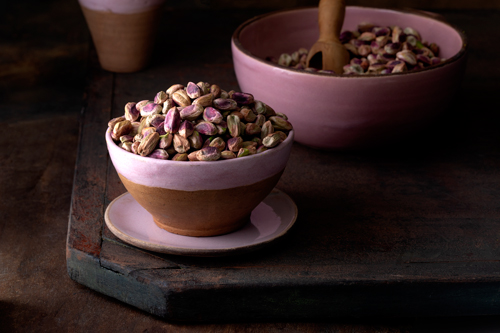
Iran is one of the largest producers and exporters of pistachios in the world. This product is known worldwide not only for its unique taste and high quality, but also for its nutritional and economic properties. If you are active in the field of agriculture, international trade or food exports, it is essential for you to have a detailed understanding of the characteristics, target market and export standards of pistachios.
Join us in this article from the Shahrivar website as we examine everything you need to know about exported pistachios, in simple but scientific and accurate language.
What are export pistachios?
Export pistachios refer to products that are packaged and exported in accordance with international standards in terms of size, taste, color, degree of openness, moisture, and health. Iranian pistachios are of unparalleled quality due to their specific climate, rich soil, and long experience in production.
Types of pistachios exported from Iran
In the export market, four types of Iranian pistachios are most popular:
Ahmad Aghaei Pistachio (stretched appearance, excellent taste)
Akbari pistachio (the largest type of pistachio)
Hazelnut pistachio (popular in the European market due to its small size)
Kale Ghuchi pistachios (large and round with a good market in China and India)
Reasons for the popularity of Iranian pistachios in global markets
1. Flavor and oil quality
Iranian pistachios are naturally high in oil, have a rich flavor, and have a long shelf life. These characteristics have made them widely used in the global food and confectionery industries.
2. Variety and choice
Unlike some countries that only have one or two types of pistachios, Iran offers a variety of pistachio varieties, giving merchants more choice based on their target market.
3. Competitive price relative to quality
Despite sanctions and export challenges, the price of Iranian pistachios is still suitable and affordable for many importing countries.
Conditions and standards for pistachio export
For successful export, compliance with certain international standards is mandatory:
🔹 Quality standards
Moisture content less than 7%
At least 90% opening of the pistachio mouth
Free from fungal contamination such as aflatoxin
🔹 Proper packaging
Use vacuum, ziplock, or metal can packaging to maintain freshness
Include the date of production, expiration, country of origin, and food standard on the label.
🔹 Permits and tests
Phytosanitary certificate
Aflatoxin test
Certificate of Origin and Customs Declaration
Target markets for Iranian pistachios
The main destinations for Iranian pistachio exports are:
China (buyer of Kaleghouchi and Akbari pistachios)
India (high consumption in confectionery and nuts industries)
European Union (especially Germany and Spain for hazelnut pistachios)
Russia and CIS countries
Emirates and Qatar (as a regional transit hub)
Challenges and opportunities of pistachio export
Challenges:
Banking and transportation sanctions
High sensitivity to aflatoxin
Competition with America and Türkiye
Opportunities:
Growth in pistachio consumption in healthy diets
The expanding market of East Asian countries
Innovative branding and packaging
Conclusion: Why is pistachio export a golden economic opportunity?
Iranian pistachios, with all their unique characteristics, continue to be one of the country’s main export products. If you are looking to enter international markets or expand your agricultural business, exporting pistachios is a safe and promising option.